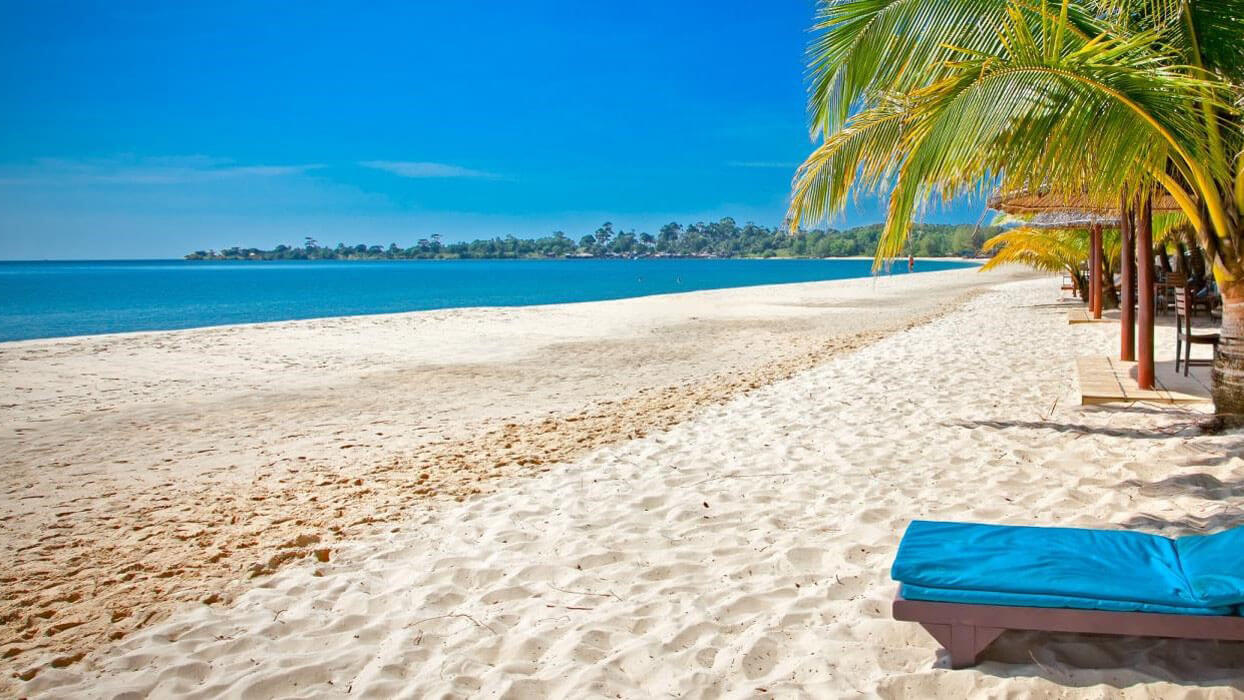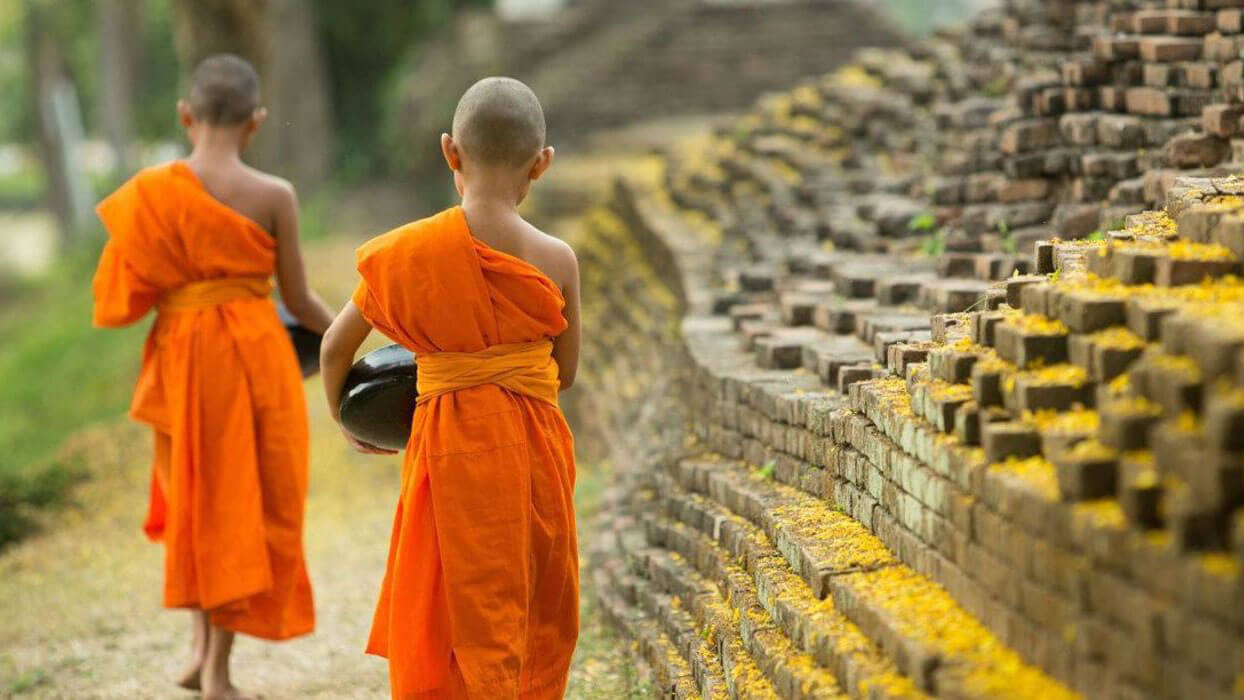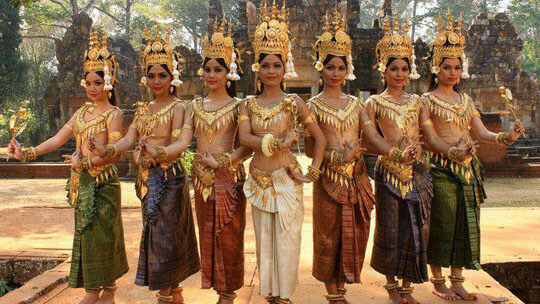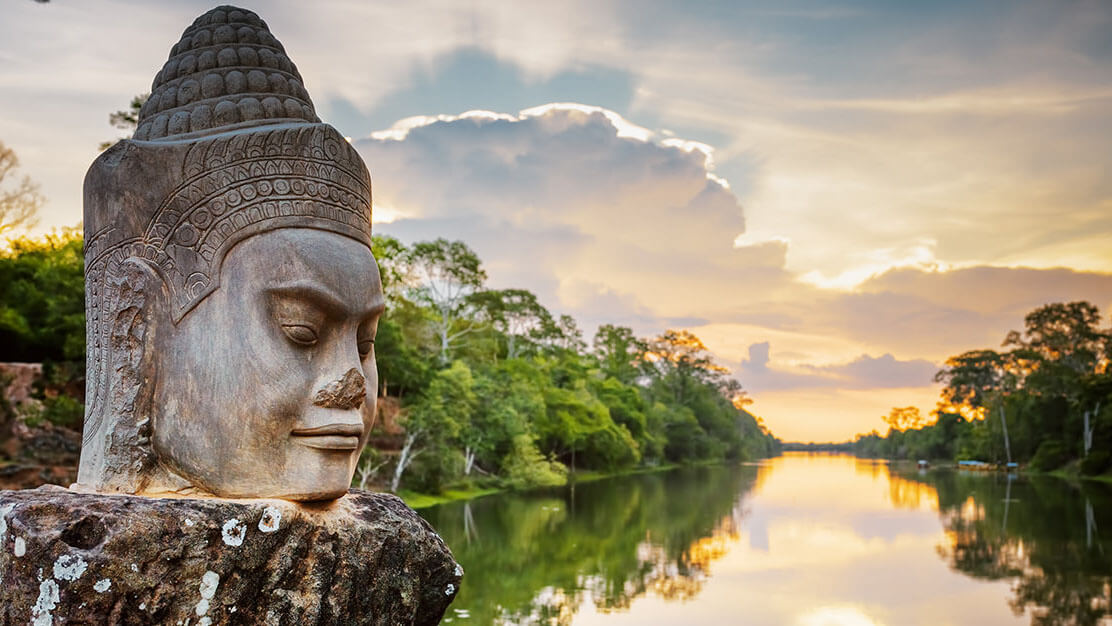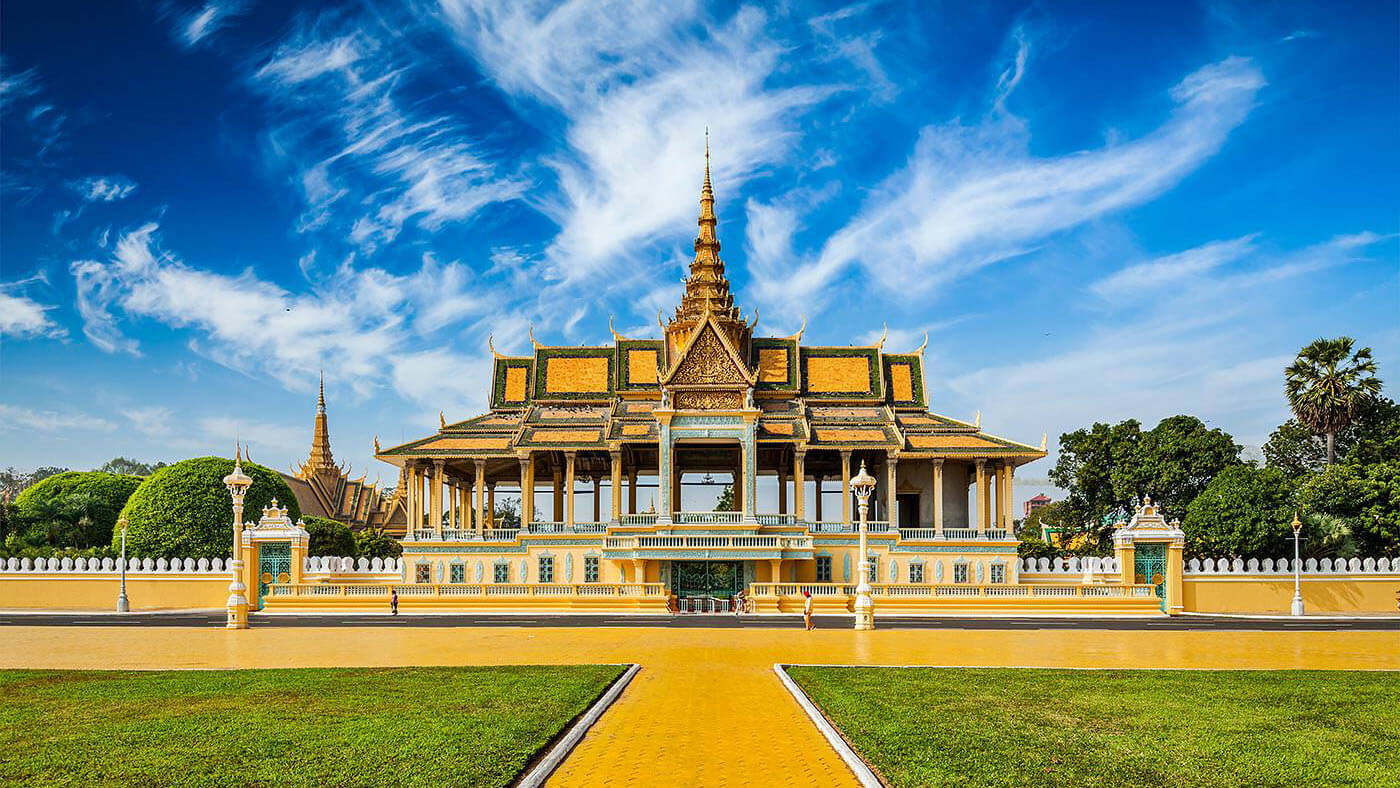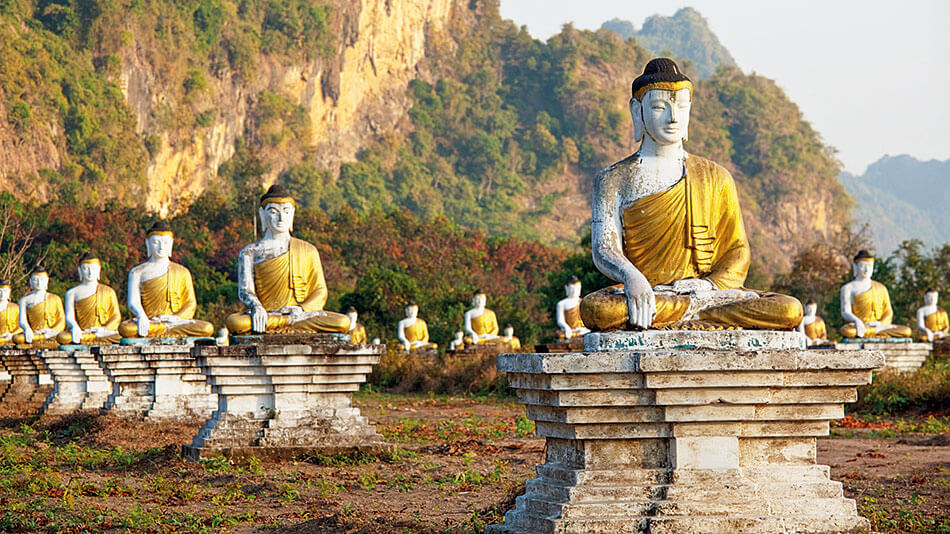Cambodia
AN INTOXICATING EXPERIENCE FOR ADVENTUROUS VISITORS
Asian Trails is a destination management company and has established a network which covers all major Asian tourist destinations, with offices in all strategic inbound tourism centres throughout South East Asia. Asian Trails provides quality destination services to multi-lingual clients at competitive rates.
Under the partial ownership of the Fairfax Group / Thomas Cook India since 2017, Asian Trails successfully maintains a business formula believing that their entrepreneurial personnel are the heart of their tremendous success, the DNA of Asian Trails.
Asian Trails offers a varied product line covering hotels, coach tours, private tours, car rentals, airport transfers, soft adventure tours, cruises, Harley Davidson motorcycle tours, home-stay, biking tours, self-drive package tours and lifestyle packages as well as cooking classes, spa holiday, golfing, private villas, private jets, incentives and luxury train journeys.
The Kingdom of Cambodia, also known by its Khmer name as Kampuchea, has its name derived from the Sanskrit name Kambuja Desa. From the stupendous achievement of Angkor Wat and its well-known offshoots to the natural splendour of Tonle Sap Lake this is a country worth exploring!
The two dominant features are the Tonlé Sap (“Fresh Water”) Lake & River and the Mekong River, this latter traversing the country on a North/South axis. The Mekong River, the 12th longest river in the world, basically runs through Southern China, Myanmar, Thailand, Laos, Cambodia and Vietnam (the Six GMS / Greater Mekong Sub-region countries), before spilling through a delta into the sea.
The French left a charming architectural legacy that the Khmer Rouge miraculously did not destroy and Cambodia has many beautiful natural spots as well as interesting cultural sites and sights, both religious and secular. Cambodia’s total population is of 14.2 millions living on a land area of 181,035 sq. km, and of which 90% of residents are of Khmer ethnic group; the rest are Cham (Khmer Islam), Chinese, Vietnamese, Indian, Thai, Phnorng, Kuoy, Stieng, Tamil, etc. Chinese influence is strong, particularly in the business sector.
Like most of Southeast Asia, Cambodia’s climate is hot and warm almost all year round. The climate is dominated by the two annual monsoon cycles of rainy and dry seasons. The rainy season lasts from May to October, and the dry season from November to April. December and January are the coolest months while the hottest period is in April-May. The average temperature is 27-28ºC. The monsoon season may carry some rains but these quite often occur during the late evening and overnight, as clouds form up during the day and are unlikely to spoil your enjoyment. There may be a brief week of rain occurring in the last week of February/early March known as “The Blossomed Mango Rain” enabling the mango trees that bear the fruit to boost the ripening of the mango, and Cambodian mango ranks among the best of the world!
- Phnom Penh, once known as the ‘Pearl of Asia’, is the capital and largest city in Cambodia. It is now a cultural, commercial, and political centre that offers a unique blend of traditional charm and urban bustle, and its arts scene is thriving with the emergence of a new breed of talented designers and artists. We are seeing a great revival of the ancient arts and dance, not to mention theatre and plays. Phnom Penh offers certainly the nicest and longest riverfront landscaped gardens and promenades of all its neighbouring countries.
- Siem Reap / Angkor, the cradle of the Khmer Civilization, and located in North-western Cambodia, is the gateway to the world-famous and UNESCO’s World Heritage site, the Angkor temple complex, which includes the magnificent Angkor Wat (the largest religious structure in the world). It has a lot more to offer to tourists, from the spectacular floating village on the Tonlé Sap Lake to the heritage site of the Kulen Mountain, Cambodia’s “Sacred Mountain” with its unique-in-the-world river beds carvings (the “One-Thousand Linga River”), to the recently discovered Koh Ker ruin complex, a long forgotten site.
- Battambang, sitting on the Sangker River, just South-west of the Tonlé Sap Lake, Battambang town is at the heart of Cambodia’s “rice bowl”, and it maintains an untouched, bucolic feel. The streets are filled with remarkably well-preserved French colonial buildings alongside traditional Cambodian houses. Its remarkable atmosphere captures and wins all over every visitor’s heart! A famous and internationally well known Circus Show run by an NGO, Phare Ponleu Selpak (literally “Lights of Arts”) is worth a visit!
- Coastal retreat beaches, hillsides and sea shores of Kep, Sihanoukville, Koh Kong, and Kampot provinces, with its palm-studded shores and warm, clear waters, boasts pristine white-sand beaches, unspoiled tropical islands, and the new ecotourism site in Koh Kong province, Koh Andet Island in Tatai Village are a must-see, not to mention the seafood choice on offer!
- The Mekong Discovery Trails, allows you to explore the River Life in Northeast, and is a network of safe, ecotourism journeys through some of the most natural and least populated parts of the Mekong River. Along the trail, you will have the opportunity to see critically endangered Mekong River Dolphins (of the same family than the Irrawaddy River Dolphins), while minimizing your impact on them and the habitats they rely on. The Mekong Discovery Trails will also enable you to discover the sparsely populated provinces of Ratanakiri and Mondulkiri: this part of Cambodia is renowned for their unique natural beauty and wealth of natural resources. The minorities such as Kreung, Kavet, Phnong, Jaray, Kachok like to live in the jungles, hills, mountains in small separated villages where they make their living through traditional ways of cultivation (shifting agriculture), hunting and collecting fruits from the forest. They believe in spirits, derived from their animism beliefs. Their Craft production has long been one of the most important functional aspects of material culture amongst Cambodia’s ethnic groups. Some ethnic crafts are of ritual origin, but most are produced for domestic use.
- Gala Dinner at one of the Angkor zone temple with Apsara dance performance, inside the Angkor Archaeological Park which is located a short drive away from your hotel and one of the most important historical sites in Asia; or a Dinner at “Le Jardin des Délices”, the Training Restaurant of the Paul Dubrule Hotel & Tourism School that prepares its students for a dynamic career in the hospitality and tourism industry by providing an appropriate curriculum, adapted to international standards, under the watchful tutelage of trained hoteliers, restaurateur, culinary, hospitality professionals; or an overnight stay in a traditional house and experience a Khmer rural life style in Kratié or Boeung Mealea areas after riding a bull/oxen driven cart in the countryside, especially when the rice fields are covered with the multi-shaded green growing rice fields in the months of June to August.
- The stunning circus performance from PHARE Ponleu Selpak, a non-profitable association based in Battambang province, with the aim to give the opportunity to young Khmer children from poor or disabled families to have access to the Culture. The youngsters are stunning the world with their tours in Europe, Australia and America.
- With the Kongkear Gondola Boats, enjoy a traditional paddle boat promenade (in an ancient Angkorian gondola shape) on Tonlé Oum on the moat surrounding the Angkor Thom compound with canapé and drinks; with the relaxing atmosphere at sunset, travel back in time to the ancient period of Angkor.
- Visit the Angkor Wat temple until sunset with option of Tethered Balloon over Angkor complex with the bird eyes’ view and fascinating photos of Angkor to be taken from the sky above.
- Half day visit by Remorque (a Khmer version of the Thai tuk-tuk) that can help and support the local business or visit by battery car (electric car) to Bayon temple complex to reduce carbon emission and to help to turn travel green. We encourage you to leave your petrol-driven vehicle behind for just one day and visit the Angkor Archaeological Park with a battery car instead.
Cambodia, is bordering the Gulf of Thailand to the Southwest, Thailand to the West, Laos to the North and Vietnam to the East. It is situated in Southeast Asia and is the tenth and last member to join ASEAN (Association of South-East Asian Nations).







